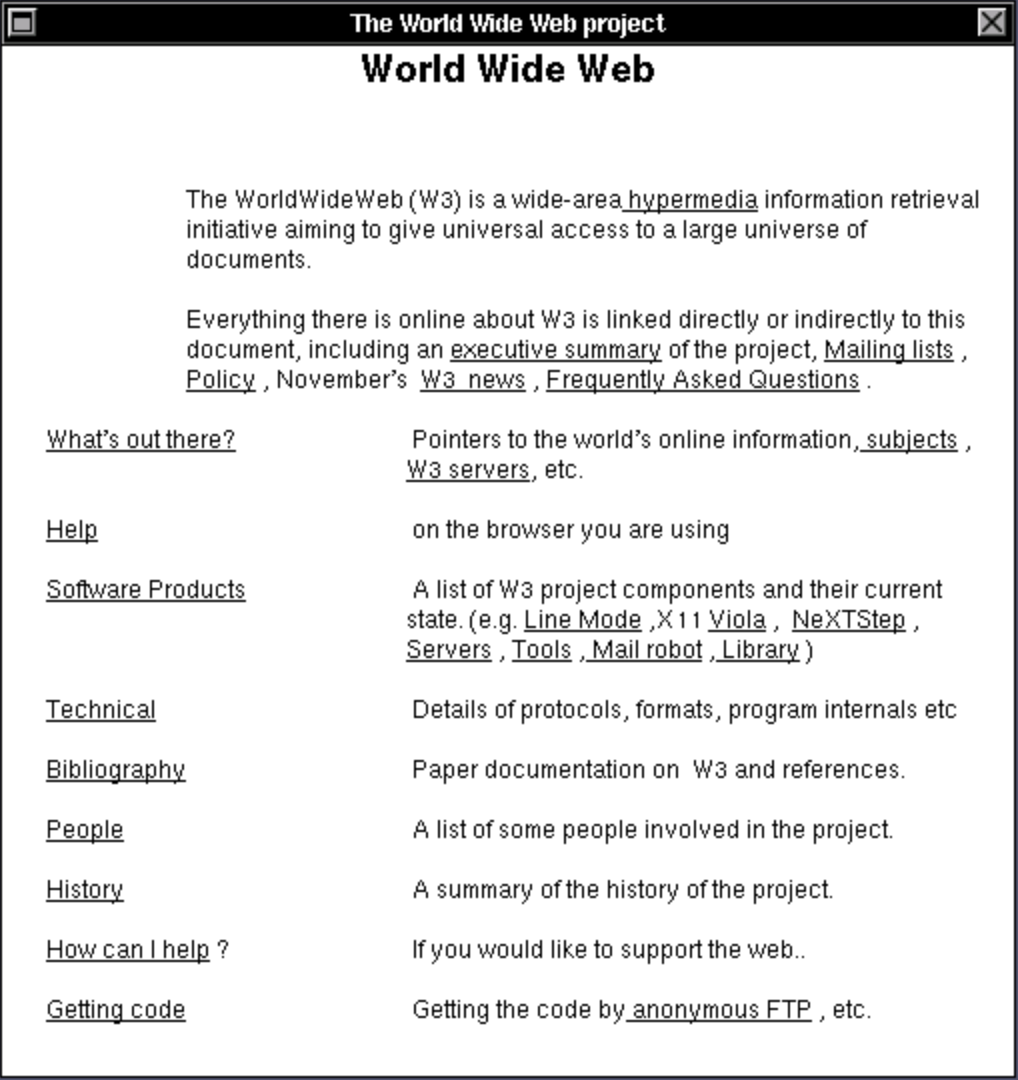Hello, World
In December 1990, an application called WorldWideWeb was developed on a NeXT machine at The European Organization for Nuclear Research (known as CERN) just outside of Geneva. This program – WorldWideWeb — is the antecedent of most of what we consider or know of as "the web" today.
In February 2019, in celebration of the thirtieth anniversary of the development of WorldWideWeb, a group of developers and designers convened at CERN to rebuild the original browser within a contemporary browser, allowing users around the world to experience the rather humble origins of this transformative technology.
This project was supported by the US Mission in Geneva through the CERN & Society Foundation.
Party like it’s 1989
Ready to browse the World Wide Web using WorldWideWeb?
- Launch the WorldWideWeb browser.
- Select "Document" from the menu on the side.
- Select "Open from full document reference".
- Type a URL into the "reference" field.
- Click "Open".
Click here to jump in (and remember you need to double-click on links):
How To Open a URL
How to edit a document and make a link
Contents
- History — a brief history of the application which was built in 1989 as a progenitor to what we know as "the web" today.
- Timeline — a timeline of the thirty years of influences leading up to (and the thirty years of influence leading out from) the publication of the memo that lead to the development of the first web browser.
- The Browser — instructions for using the recreated WorldWideWeb browser, and a collection of its interface patterns.
- Typography — details of the NeXT computer's fonts used by the WorldWideWeb browser.
- Inside the Code — a look at some of the original code of WorldWideWeb.
- Production Process — a behind the scenes look at how the WorldWideWeb browser was rebuilt for today.
- Related Links — links to additional historical and technical resources around the production of WorldWideWeb.
- Colophon — a bit of info about the folks behind the project.
